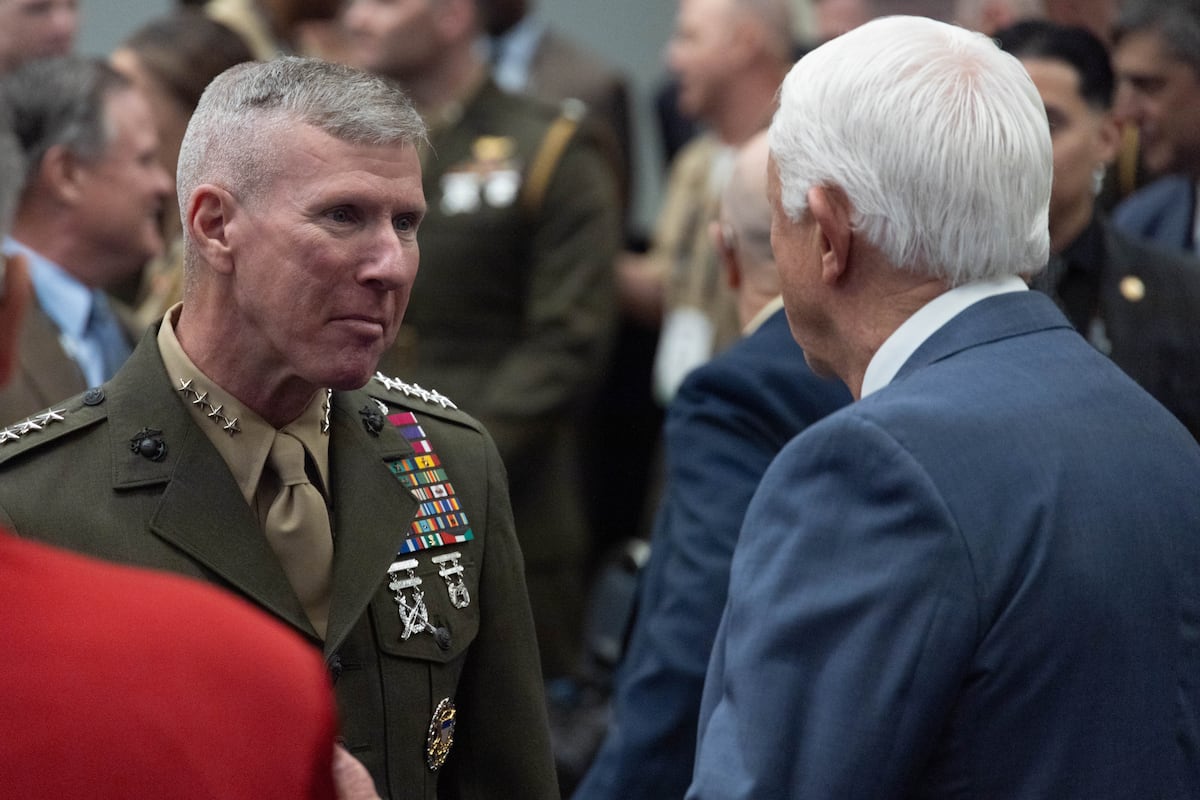The Marine Corps’ highest-ranking officer continues to emphasize the service’s key mission in crisis response through its expeditionary units, while asking industry to give the Corps affordable and autonomous ways to modernize the force.
Marine Corps Commandant Eric Smith told the audience at the annual Modern Day Marine exposition Thursday that the force design decisions made over the past six years have put new capabilities in the hands of crucial formations, such as the Marine Expeditionary Unit, or MEU.
“This is about more than ships, it’s about deterrence and denial,” Smith said. “That is why the 3.0 [Amphibious Ready Group] MEU matters, it gives our leaders options.”
A 3.0 presence means a three-ship ARG-MEU, each deployed out of the East Coast, one out of the West Coast and a third on episodic deployments out of Okinawa, Japan.
An ARG includes an assault ship, a landing ship with helicopter platform and a dock landing ship. The MEU contains a battalion landing team, ground combat element, aviation combat element and combat logistics element to form a Marine Air Ground Task Force, or MAGTF.
To achieve that, the Corps needs 31 amphibious ships at a readiness level of 80%. Demand is higher from combatant commands, Smith said. The demand is more than five ARG MEUs, the most requested asset behind the Carrier Strike Group.
Readiness levels hover at around 50%, Smith said in early April at the Navy League’s annual Sea-Air-Space Exposition. That’s because following two decades of land-based wars in Iraq and Afghanistan, the Corps had largely not maintained its fleet. Money for maintenance and shipbuilding went to those wars instead.
And Smith wants more capabilities for those MEUs as the service battles an amphibious ship shortage.
“What I need is affordable, lethal, autonomous, light and I can fund at budget time,” Smith said.
Some of those new developments include the Marine Air Defense Integrated System, or MADIS, and its lighter version, the L-MADIS.
The system still needs more autonomous solutions to get after a major threat – drone swarms.
“The big thing that really keeps me up at night is swarms,” Col. Andrew Konicki, head of ground-based air defense for Marine Corps Systems Command, said Wednesday.
Striking those threats from aboard ship or on shore is vital to keeping Marines alive.
“That is how we’re going to say ahead of the adversary, with autonomy,” Smith said.
Thirteen of 21 Light Marine Air Defense Integrated Systems, or L-MADIS, have been fielded over the past three years.
That light system was fielded to the 3rd Littoral Anti-Air Battalion, 3rd Marine Littoral Regiment in 2024. It handles group I and II drone threats.
Marine Expeditionary Units have used the system when crossing various maritime chokepoints, and it has proved effective in the maritime environment, despite the system being built mainly as a ground-based air defense system, Konicki said.
Seven more of the larger MADIS system will be fielded by September, bringing the Corps total to 20, with full fielding expected by 2033.
That’s for air defense. For a more offensive approach, the Corps expects to receive four-dozen mobile fires platforms, dubbed the Navy-Marine Expeditionary Ship Interdiction System, or NMESIS.
The NMESIS is made up of a Naval Strike Missile mounted on a Joint Light Tactical Vehicle platform with semi-autonomous and autonomous capabilities to launch remotely.
The 3rd Marine Littoral Regiment, a newly created unit for fighting in the littorals, or waters near land, received the first six NMESIS in November.
The Hawaii-based unit formed in 2021. The service then established the 12th MLR on Okinawa, Japan, with plans for a third rotational MLR on Guam.
Six of the NMESIS systems are set to field with 12th MLR beginning March 2026.
All these moves and the push for new, better equipment have a singular aim, he said.
“Modernization with a clear purpose – to keep Marines lethal and survivable,” Smith said.
Todd South has written about crime, courts, government and the military for multiple publications since 2004 and was named a 2014 Pulitzer finalist for a co-written project on witness intimidation. Todd is a Marine veteran of the Iraq War.
Read the full article here
